Why currant bushes dry and what to do to solve the problem
Currants are grown by many gardeners on plots and cottages. This shrub with tasty and healthy fruits is hardy and undemanding to care for. However, with regular violation of the rules of agricultural technology, you can encounter problems, the most common of which is drying of the leaves.
The reason that leaves dry on currants may be unfavorable weather conditions, improper care, damage by diseases and pests. In the article, we will talk in more detail about why currants dries and what to do to save the bush.
The content of the article
Poor conditions and care
Unfavorable climatic conditions and violation of the rules of agricultural technology often become the reasons for the drying of currant leaves... At the same time, a change in the type of green mass is a symptom that indicates serious violations.
Dried twigs and leaves indicate a violation photosynthesis, root problems, or nutritional deficiencies.
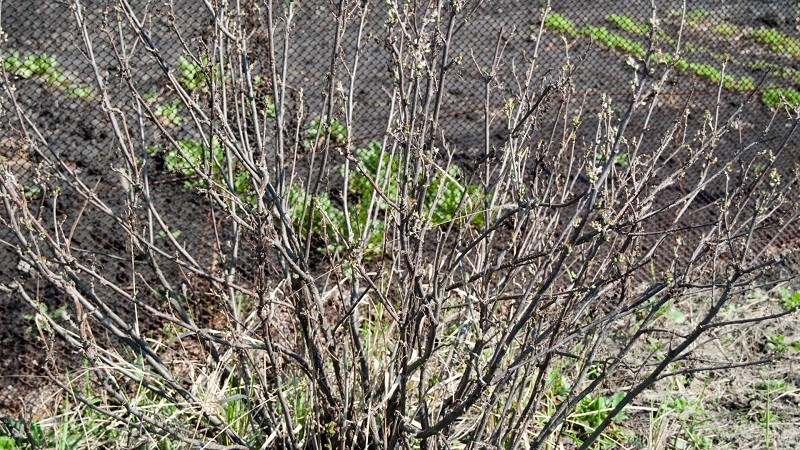
Dry ground
In hot dry weather, the currants do not have enough liquid obtained from the soil... The roots begin to dry out and the currant bush no longer absorbs nutrients. Therefore, in the dry season, the shrub needs additional watering. In the absence of precipitation, currants are watered once a month. 2-3 buckets of water are poured under each plant.
Stagnant fluid
During the rainy season, there is a high risk of liquid stagnation.... When there is a lot of precipitation, the currants are not watered. To avoid stagnation of the liquid, the soil is loosened after each watering and precipitation. When planting, a drainage layer 5 cm thick is poured on the bottom of the hole. Another way to avoid liquid stagnation is to mulch the soil around the currant bush.
Violation of watering rules
If the rules for watering are violated, the currant leaves also begin to dry out. If you use ice cold, not warm, settled water, the roots will rot. This will prevent nutrients from being absorbed. Watering during solar activity will cause burns on the leaves that look like dry spots. Therefore, currants are watered early in the morning or in the evening.
Lack of nutrients
3 years after planting, the soil in which the currants grow is depleted... Due to the fact that the plant does not receive the required amount of elements, the leaves and branches of the currant dry out. To provide the plant with nutrition, from the third year after planting it is fed 4 times per season. Fertilizers should contain nitrogen, phosphorus, potassium, magnesium, manganese, boron and calcium.
Drying due to disease
Black, red and white currants are hardy crops. For violations of the rules of care to affect the condition of the crown, they must be serious and regular..
Much more common cause is infection... To cope with the problem, it is important to recognize in a timely manner what exactly the bush is sick with and determine the method of treatment.
Anthracnose
Anthracnose - a fungal disease... It most often affects red currants. The epidemic usually occurs in late June or early July.
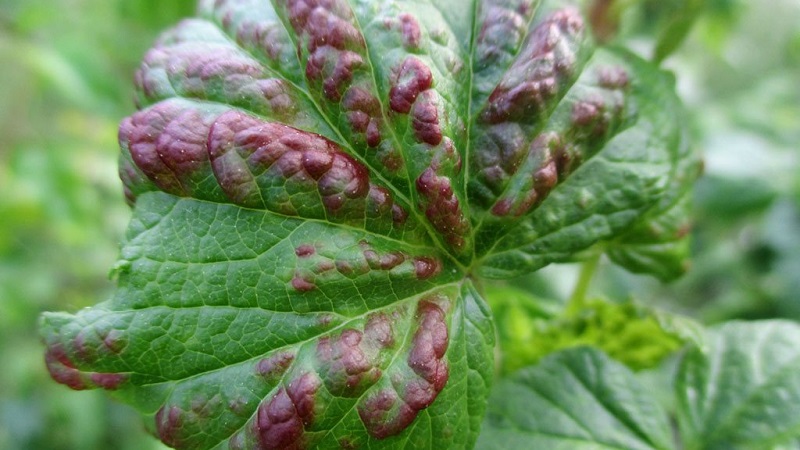
Anthracnose symptoms:
- Small red spots appear on the leaves. Over time, they begin to blur, increase in size.
- The spots go to the branches. Shoots dry up and die.
- The leaves dry up, the spots become dark, almost black. Premature leaf fall begins.
Without timely treatment, photosynthesis is disrupted, and the leaves fall off... The frost resistance of the plant decreases. Often, currant sick with anthracnose does not survive the winter.
To get rid of the disease, the affected leaves are cut off... The shrub is sprayed with colloidal sulfur, copper sulfate or fungicide. The procedure is carried out every 10 days until the plant is cured.
Tuberculariosis
The causative agent of tuberculariosis is a fungal infection... This disease often causes the currants to dry out.
Infection affects shrubs through lesions in the bark... Young plants are the first to fall ill, and then the fungus spreads to old ones. In winter, the pathogen does not die due to its high frost resistance.
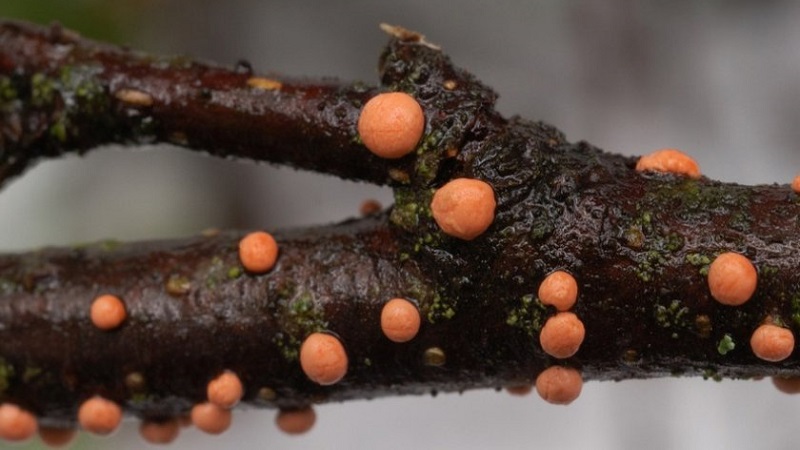
The symptoms of tuberculariosis:
- Bubbling red spots appear on the back of the leaf plates. The defeat begins from the top of the bush, gradually sinking lower and lower.
- Spots appear on branches and shoots. They are convex and have a brown tint.
- Leaves and branches turn yellow and dry out. The plant will slowly die without treatment.
Fight tuberculariosis is recommended with fungicides ("Captanol"). Before treatment, diseased leaves and shoots are cut off. Places of cuts are lubricated with garden pitch.
Treatment with preparations containing copper is effective... The most commonly used solution is prepared from 1 tbsp. l. copper sulfate and 10 liters of water.
Note! The fungus hibernates in fallen leaves. To reduce the likelihood of infection of currants, every autumn the site is cleared of weeds, fallen leaves and plant debris. The collected garbage is carried away from the site and burned.
Verticillary wilting
Verticillium wilt is a fungal disease characteristic of nightshade crops... Previously, it was not dangerous for currants. However, the pathogen mutated and began to infect the black variety of the bush.
Fungal the infection enters the plant through the root system... Blocks the flow of fluid and nutrients into the cells of the bush, releases toxic waste products. This leads to the drying out of the branches and green mass and the gradual death of the plant.
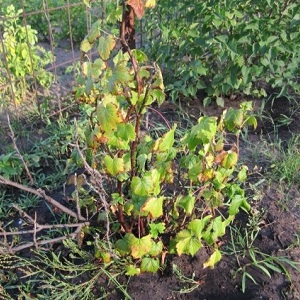 Disease symptoms:
Disease symptoms:
- The root system quickly decays and decays.
- Currant leaves become covered with yellow spots, wither and dry. Intensive leaf fall begins.
- Branches and shoots dry out, break and fall off the bush.
Verticillium wilt develops rapidly... The pathogen is resistant to chemicals, so an infected plant cannot be saved.
To avoid infection currants, it is important to deal with pests in a timely manner and remove weeds. Timely top dressing and sprinkling of the bush will help to improve immunity.
Columnar rust
Columnar rust is the main reason why black currants go missing... Usually, the disease affects this particular type of culture; the white and red varieties are much less likely to become infected.
The causative agent of columnar rust is a fungus... Its carriers are conifers and sedges.
On the affected plants, not only leaf plates dry out, but also most of the berries... The plant's frost resistance decreases, they often do not survive the winter. Without timely treatment, currants die.
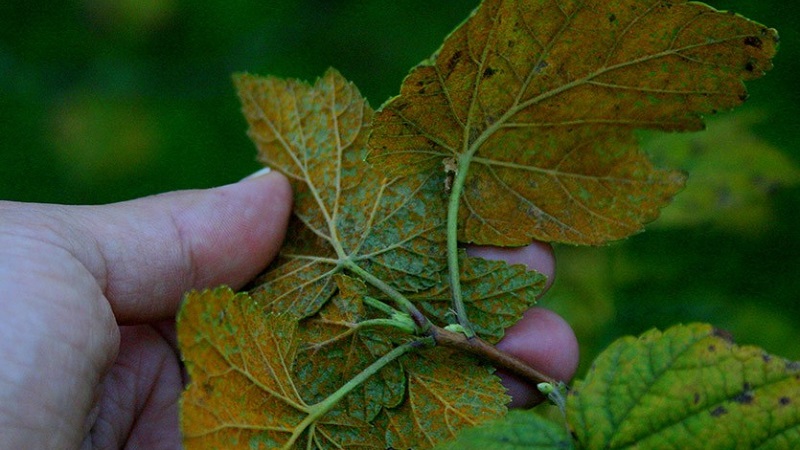
Recognize columnar rust can be on the following grounds:
- On the outside of the leaf blade, yellow or reddish spots are formed. They gradually merge and grow in size.
- Orange (rusty) stripes and spots appear on the back of the leaf plate. Soon, pile-like growths form on them, which are separated from the sheet and hang down in columns. Spots are formed on the shoots.
- Affected leaves and shoots dry up and fall off.
To get rid of the disease do pruning sick parts. Remove not only the affected leaves, but also shoots with red spots. Cutting places are treated with garden pitch.
Note! Fallen leaves, branches and other vegetation under the bush are removed. She is taken away from the site and burned. The soil around the bush is treated with Fitosporin or another antifungal agent.
The bush is treated with colloidal sulfur, copper sulfate solution or Bordeaux mixture... Treatments are carried out at least 3 times with an interval of 10 days.
Interesting on the site:
Folk remedies for powdery mildew on currants
How and what to fertilize currants in the fall for a good harvest
Currant pests
Pests Is another common cause of wilting of currant leaves... They not only cause direct damage to leaves and roots, but also cause infection of the crop.
Spider mites and kidney mites
There are many types of spider mites that affect currants.... These are small pests of red, black, brown or gray color.
The mite settles on the back of the leaves, enveloping them in cobwebs... The leaf plates roll up into a tube and dry out.
Kidney mites infect currant buds... They also feed on the sap of the plant. The kidneys become swollen, head-shaped. From them ugly leaves and deformed shoots grow. They quickly fade and fall off.

Acaricides are used to combat the pest Anti-Tick, Envidor. Folk remedies are also used:
- Garlic and onion infusion. 1 kg of onion and 200 g of garlic are crushed together with the husk, pour 10 liters of water and insist for 2 days.
- Orange peels. The peel of 5 oranges is poured with boiling water and insisted for 2 days. 30 g of liquid soap is added to the resulting infusion.
Aphid
Aphids are the most common pest of horticultural crops... It settles in colonies on the back of leaf plates and young shoots.
Aphids feed on plant sap... This leads to the formation of blisters on the leaves and their drying out at the edges. As a result, the affected leaves and shoots fall off.
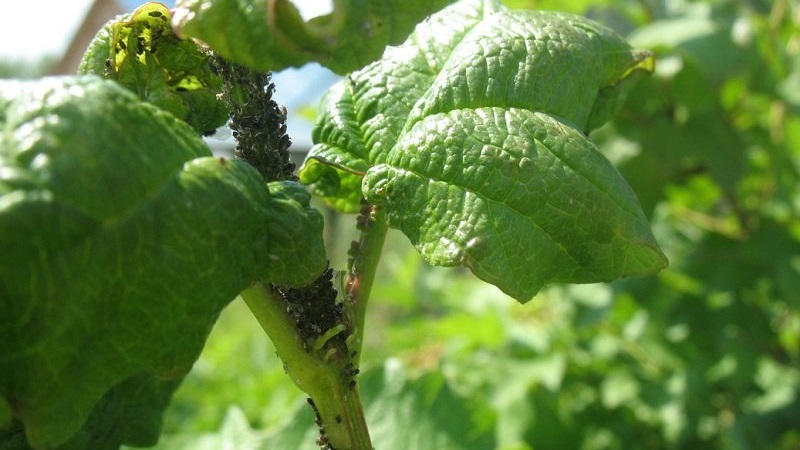
To get rid of the pest, use insecticides "Aktellik", "Aktara", "Biotlin" or folk remedies:
- Ash soap. A piece of laundry soap and 1 kg of ash are dissolved in 10 liters of water. The mixture is sprayed on the bushes until the problem disappears.
- Decoction of herbs - tops of nightshade crops, wormwood, chamomile, yarrow. The grass is filled to 1/3 of the bucket. The rest of the volume is topped up with water. The mixture is boiled for half an hour, then insisted for a day.
- Onion peel. 3 kg of onion husks are poured with a bucket of water. The mixture is brought to a boil and insisted for two days.
Read also:
Ants and May beetles
Ants do double harm to currants... They build nests in the roots of the bush, damaging the roots. This leads to the fact that the plant does not assimilate nutrients.
Also ants become the main cause of aphid damage to currants... They intentionally bring the pest to the plant, as they feed on the products of its vital activity.
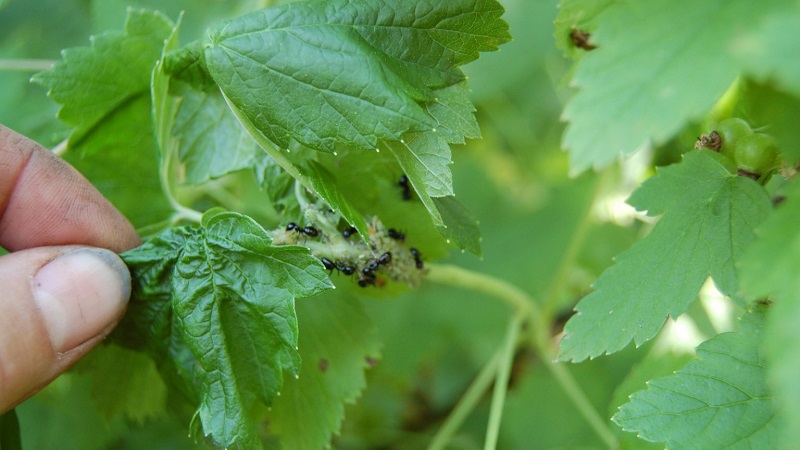
To get rid of ants, use one of the methods:
- Chemicals. There are special preparations for fighting the pest - "Feverfew" and "Antimuravei".
- Products that exude a smell that repels insects - cinnamon, unrefined sunflower oil, wormwood, bay leaves, tomato tops. Such "scarers" are laid around the anthill.
- Watering an anthill with boiling water in early spring.

May beetle larvae gnaw through currant roots... This leads to wilting of greenery and shoots.
To detect a pest, dig up a bush and examine the roots... The larvae are harvested by hand and destroyed.
Currants are treated with one of the means:
- "Antikhrusch";
- "Initiative"
- Vallar.
Glass-maker
Glassy larvae live inside branches and shoots... They gnaw passages there, which leads to wilting and crushing of leaves and shedding of fruits.
To get rid of the pest, remove infected branches and shoots. The shrub is treated with Inta-Vir.
The soil is loosened. The soil is mixed with black pepper and dry mustard.
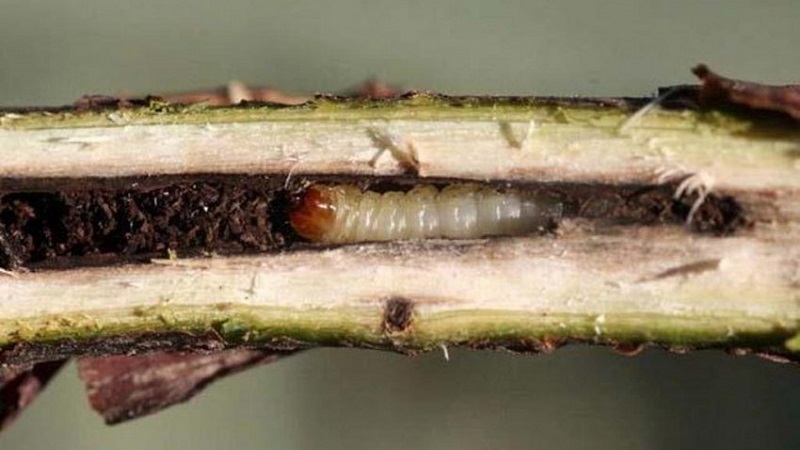
Shield
The scale insect feeds on the juice of currant leaves and shoots... Its larvae attach to the back of the leaf plates along the veins and on the branches. From above, the larvae are protected by a strong chitinous layer.
It is possible to detect scale insects not only by drying of leaves and shoots. On close inspection of the bush, the pest itself is noticeable.
Scabbard is fought with insecticides Colorado, Tanrek, Aktara. Another option is to rip off the most affected parts of the plant. After that, spray the currants with kerosene diluted with water 1: 1.
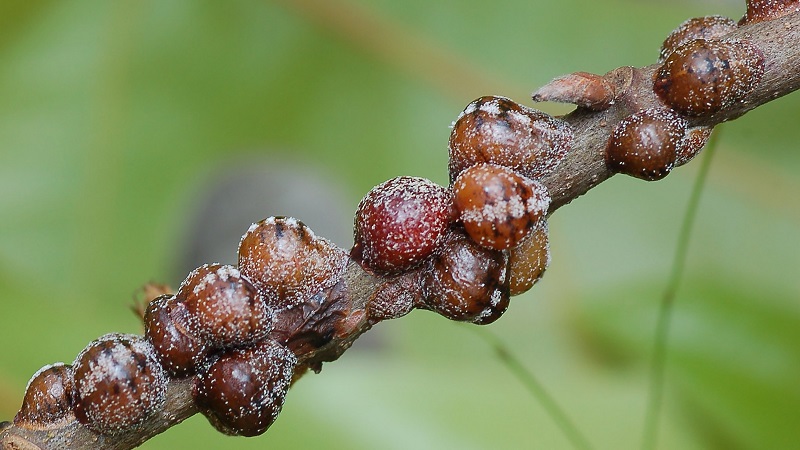
The deaf and the bear
Blind rats are not interested in currants... They feed on potatoes, carrots, beets, legumes and bulbous plants.
Medvedka is found in burrows in the ground and "mown" areas of vegetation... To save the harvest, natural barriers are erected, ultrasonic scarers and special traps are used.
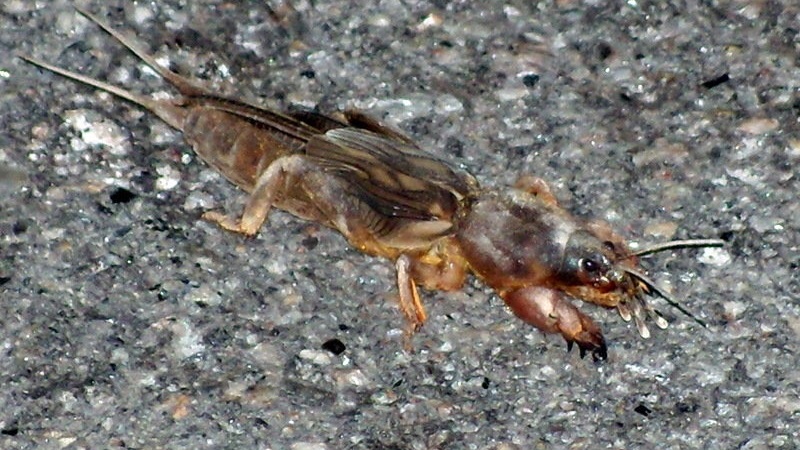
Conclusion
Drying of currant leaves indicates that the plant may die. Such a problem is caused by unfavorable weather conditions, violation of the rules of care, infection and pests.
To deal with the problem, the shrub is inspected for signs of disease or insects. If a lesion is detected, the plant is treated, the dried parts are burned. If there are no symptoms, pay attention to caring for the plant. After eliminating the negative factors, the problem disappears.